#AutismUnderstanding
Explore tagged Tumblr posts
Text
Be Kind, My Son With Autism Inspires Me Every Day
Be Kind: Spreading Acceptance for Our Autistic Children
This "Be Kind: My Son Has Autism" shirt isn't just clothing; it's a conversation starter and a powerful symbol of love and acceptance.

Buy now:19.95$
The message "Be Kind" is a gentle plea for understanding and empathy towards autistic individuals. Wearing this shirt alongside your child becomes a statement of pride and a call to action for a more inclusive world.
The vibrant design goes beyond traditional autism awareness symbols. It focuses on the message of kindness, a value that transcends diagnosis and creates a space for connection.
This shirt is a way to spark conversations, educate others about autism, and promote acceptance. It allows you to advocate for your child while celebrating their unique strengths and perspectives.

Buy now
Made with comfortable, high-quality fabric, this shirt is perfect for everyday wear. It's a way to show your unwavering support for your child and their journey.
More Than a Shirt: Every purchase contributes to organizations dedicated to autism awareness and inclusion initiatives. You're not just wearing a shirt; you're making a positive impact and helping to create a brighter future for autistic children everywhere.
Join the movement and wear your heart on your sleeve – literally! Choose your favorite "Be Kind: My Son Has Autism" design today and show the world the power of kindness and acceptance. Together, we can create a world where all children feel valued and understood.

Buy now
Show your love and advocate for acceptance with our "Be Kind: My Son Has Autism" tee. This design isn't just a shirt; it's a conversation starter. Vibrant colors and a clear message raise awareness and promote empathy for autistic individuals. Made with comfy, high-quality fabric, this shirt is perfect for everyday wear. Rock it with pride alongside your son and show the world the beauty of neurodiversity. Every purchase supports autism awareness initiatives, making a positive difference. Choose kindness, choose acceptance – choose your favorite design today!

Buy now
Light it up blue for Autism Acceptance Month! We've got a toolbox of engaging activities to celebrate neurodiversity and spread awareness.
Craft Time: Spark creativity with fun projects that explore color, texture, and sensory play.
Learning Adventures: Downloadable resources and activity sheets provide age-appropriate introductions to autism.
Social Fun: Board games and interactive activities encourage social interaction and understanding.
Sensory Exploration: Create calming sensory bins or calming fidget toys for focused fun.
These activities are perfect for schools, families, or community events. Let's celebrate the incredible spectrum of autism together!
#BeKindMySonHasAutism#KindnessMySonAutism#AutismAwareness#AutismAcceptance#AutismUnderstanding#AutismInclusion#AutismEmpathy#AutismCompassion#AutismAdvocacy#BluePumpkinHalloween#AutismAwarenessHalloween#AutismSensoryHalloween#AutismInclusiveHalloween#AutismSupportHalloween#AutismMonthActivities#AutismAwarenessMonth#AutismAcceptanceMonth#AutismInclusionMonth#AutismSupportMonth#View all AUTISM GIFTS products: https://zizzlez.com/trending-topics/hobbies/autism-spectrum-awareness-month/#All products of the store: https://zizzlez.com/
0 notes
Text
Autism and the Importance of Routine
Many autistic individuals find comfort and security in routines. Routines can help reduce anxiety, provide predictability, and give a sense of control. Changes in routine, however, can be incredibly distressing and lead to increased anxiety and behavioral challenges.
It's essential to respect the routines of autistic individuals and provide advance notice and support when changes are necessary. Remember, what may seem trivial to us can be immensely significant to someone with autism. Understanding and accommodating these needs can significantly contribute to their comfort and well-being.
13 notes
·
View notes
Text
Touch Sensitivities
A lot of people know I don’t like hugs.
This isn’t entirely correct.
I hate light touch, because it is physically painful and/or uncomfortable. Unfortunately, it’s a regular part of life (which I very much dislike). Often when people meet me, they consider a light touch on the shoulder an acceptable greeting. When someone wants to get around me, they will usually lightly touch my hip or waist and move me out of the way. People want a hug when we first meet, or when I go somewhere to meet them (even if I don’t know them well). Generally, I can get away with sticking my arm out for a quick handshake instead. Handshakes are still uncomfortable, but they are not as anxiety-inducing as hugs. I find that people try to hug myself and other women, but attempt a handshake with men, which is annoying.
One way to explain this would be to imagine you are stabbed by a tiny needle. It’s gonna hurt, you’re going to flinch away, and you’re going to say ‘ouch!’ and probably get annoyed at the person who pricked you. You will probably try to avoid this person. The prick will be even worse if it’s done unexpectedly, or done from behind you when you cannot see it coming.
Now imagine people get offended when you flinch away, or get annoyed when you try to say ‘no, I don’t really want you to stab me, thanks’. Imagine pricking someone was an acceptable way to move them, to greet them, to show affection. That sounds like a pretty crazy world, in my opinion.
For me, light touch feels painful, like a pin prick. And like a pin prick, I need to rub the area that has been touched afterwards to remove the horrid muscle memory. People often get offended by this, or at the very least look affronted. How dare I deal with the pain in a way that doesn’t affect them at all! (Sarcasm)
On the other hand, deep pressure or firm touch feels fine, calming, and even intensely relaxing. Going back to the needle metaphor, consider a magic trick. A magician pricks themselves with a pin to prove it’s real. They then go to lie down in a bed of pins. The audience is in suspense, worried they will be sliced up. But no! They are fine. They lie down, then get back up and bow with not a scratch on them.
Firm touch is similar to this, in my experience. Light touch takes all of my attention. My nervous system is going ‘Hey! Over here! We are under attack! Pay attention! Who cares about maths or writing, this is painful and we must defend ourselves!’. I’m hyper-focused on that one tiny spot of light touch. Deep, firm touch is different. My nervous system registers the touch is there, and then moves on. I think this may be how non-autistic people experience all forms of touch.
Deep pressure can be incredibly calming. I cannot explain it, but maybe consider the relaxing feeling you get when you sink into a comfy bed after a long day on your feet. The comfort and relaxation is amazing.
Back to hugs.
When I was younger, people would often hug me even if I was overwhelmed or made it clear I didn’t want a hug. I’d feel guilty for rejecting their hug, but also angry and confused as to why I couldn’t deal with it like everyone else. I came to associate hugs with pain and sensory overload, because people would try to comfort me during a sensory overload in the same way that they would comfort a non-autistic child; by hugging me. But in sensory overload, hugs are painful. Touch is painful. I remember that once a friend wanted to hug me at lunch time in school, but that situation is incredibly overwhelming and I refused. She proceeded to circle her arms around me without touching me ‘because that’s not a hug’. I curled up into a ball and kept saying ‘no’ and trying to ask her to stop without pushing or using force. Everyone was laughing, because they didn’t understand that this was intensely stressful and anxiety inducing. Every inch of me was in fight or flight mode. I was terrified. My senses were saying ‘something is here, something is preparing to attack’.
She eventually stopped, and I instantly moved away. But then I tried to laugh it off. Making and keeping friends is very difficult for me, and everyone else was laughing and I felt the only way forward was to suppress my anxiety and pretend everything was fine.
I didn’t feel I could say ‘that wasn’t okay’. I can’t remember if I told her about it later.
But they didn’t accept me saying no. They completely disrespected my bodily autonomy.
It’s terrifying. If an autistic person doesn’t want to hug you, PLEASE do not force them. It is so very scary, and all it teaches us is that saying ‘no’ doesn’t matter; other people’s feelings matter more than our pain and fear.
So that is why I would tell everyone ‘I hate hugs’. I believed it for a while.
I’ve since come to realise I LOVE HUGS. When they are from family or friends, when they are very tight, when I’m not overwhelmed, and, most importantly, when I seek them. If I want to hug you, I will (unless you don’t want me to). If you ask for a hug or indicate you want one, give me the choice as to whether or not I will comply. Don’t force hugs.
And please, when someone says ‘hey, I’m touch sensitive and light touch actually hurts so please don’t touch me lightly’, don’t laugh, then touch them and go ‘wait, like this? This hurts'?’.
Yes. It does. I just told you. Listen when someone tells you that something hurts. Don’t make them prove it. I’ve learned to hide the expressions of panic and pain from light touch, because it makes others uncomfortable and offends them.
If you want a hug, ask.
If they say no, respect that.
It’s really not that complicated.
https://www.stimsensory.co.uk/blog/touch-sensitivities
#touch#autism#autistic#ActuallyAutistic#actually autistic#autism awareness#AutismAwareness#autism acceptance#AutismAcceptance#autism understanding#AutismUnderstanding#SPD#sensory#sensory sensitivities#SensorySensitivities#SensoryOverload#sensory overload#sensory processing disorder#SensoryProcessingDisorder#stim#stimming#hugs
36 notes
·
View notes
Photo
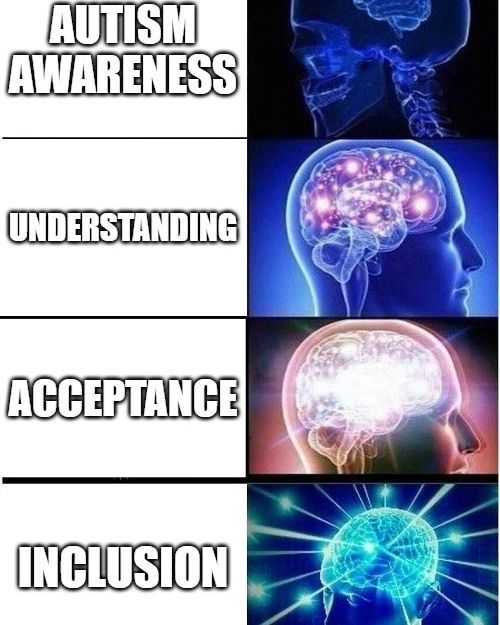
Being a hardcore introvert, I am not on social media every day. Especially as I'm managing chronic illness and severe burnout while working full time and taking care of my fur babies. My fur babies are rescues, many of whom have serious health issues. Two have terminal cancer. I advocate as I can for animals and for autistics like myself. For me, awareness of an issue is a first step. The ultimate goal is inclusion. That means understanding, accepting, and including autistics. Acceptance alone is not enough. #autisticadults #autistic #introvert #autisticmemes #autism #autismacceptance #inclusion #autisticinclusion #autismawareness #autismunderstanding #autisticintrovert https://www.instagram.com/p/CpQyyG6Pp-u/?igshid=NGJjMDIxMWI=
#autisticadults#autistic#introvert#autisticmemes#autism#autismacceptance#inclusion#autisticinclusion#autismawareness#autismunderstanding#autisticintrovert
1 note
·
View note
Text
Getting to grips with Autism
Imagine looking at yourself in the mirror growing up and you can’t see the animation in your eyes or your smile, and you don’t understand why.
And as you clean your face daily, and as you look in the mirror, you keep going back to the same thought process, and every time you see your eyes and your reflection in the mirror, you know you’re dealing with something. You struggle to learn, you struggle with school, and you don’t understand why.
There is a big difference between those who learn about autism and those of us who live with it. It is a difficult disability to live with, because the nature of what autism is, means it has the ability to cut you off mentally, emotionally and physically, so you’re continually living with your thoughts, ‘on your own.’
When you finally get your autism diagnosis, how do you cope with it?
These would be my tips:
Forget everything you thought you knew about autism because autism presents differently;
Once you have your diagnosis learn about what you deal with;
Accept that you and your life will be different;
If you are the child and even if you’re not, it is important to have support;
Look for and accept help if you need it.
It is important all children understand their disability growing up. It has to be age appropriate, so he or she is able to understand as they grow, exactly what they deal with. Inclusivity is an important part of that.
Autism like any other disability needs to be normalised, and siblings need to be involved, because autism will go on to affect them too.
For more inspirational, life-changing blogs, please check out my site https://www.thecpdiary.com
#thecpdiary#blog#gettingtogrips#with#autism#mentalhealth#mentalillness#mentalwellbeing#WorldAutismAwarenessDay2021#autismacceptance#autismunderstanding
0 notes
Photo

#autismacceptance #autismunderstanding #autismawareness #autismisbeautiful (at United States) https://www.instagram.com/p/CNJUSGLh0On/?igshid=1bhmqiabs74qa
0 notes
Photo
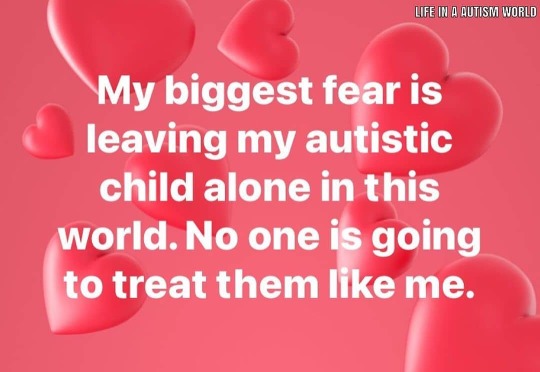
Exactly Posted @withregram • @lifeinautismworld #autism #autismawareness #autismacceptance #asd #autismspectrum #autismspectrumdisorder #autismparents #autismmom #autismdad #autismparenting #lifewithautism #livingwithautism #autismsupport #autismadvocate #autismawarenesseveryday #autismjourney #autismworld #autismunderstanding #autismcommunity #specialneeds #specialneedsparenting #unconditionallove #autismquotes https://www.instagram.com/p/CIMTANLp94-/?igshid=e1ac8n0x70hn
#autism#autismawareness#autismacceptance#asd#autismspectrum#autismspectrumdisorder#autismparents#autismmom#autismdad#autismparenting#lifewithautism#livingwithautism#autismsupport#autismadvocate#autismawarenesseveryday#autismjourney#autismworld#autismunderstanding#autismcommunity#specialneeds#specialneedsparenting#unconditionallove#autismquotes
0 notes
Photo
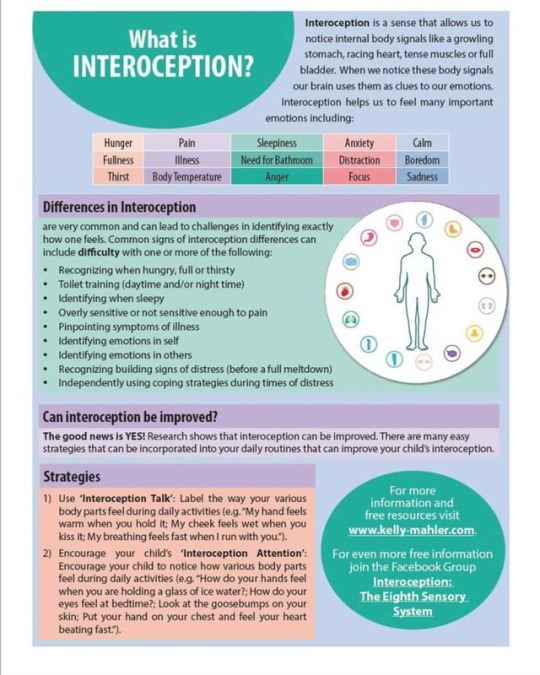
Autistic people all over the autism spectrums, regardless of verbal ability can have difficulty identifying and labelling their internal sensations. This is a good infograph that explains this sensory difficulty, interoception, with some advice about how to help with this. #autism #BetterWaysThanABA #AutismUnderstanding https://www.instagram.com/p/BxfS6fBjqy5j0O6_4q85Quw_co9KPocEHENi6E0/?igshid=1aoxpxua0ogvi
0 notes
Photo
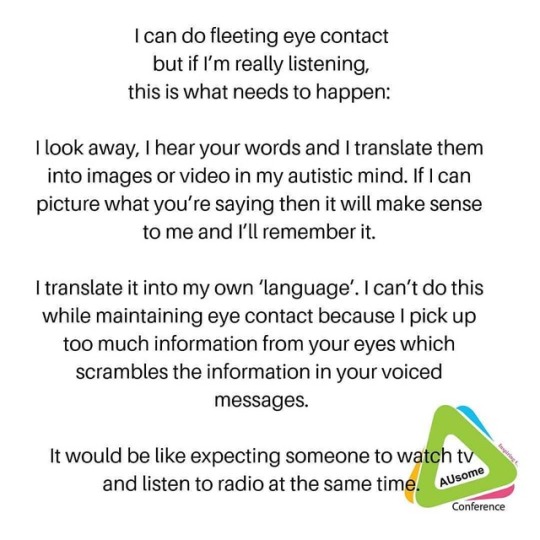
Via: @ausome_conference: "Eye contact can be painful, intrusive, embarrassing, intimidating and stops us from actively listening" . . #autismunderstanding #eyecontact #asd #ausome #autisticadult #autismacceptance #autismawareness #onthespectrum #autismtherapy #abatherapy #neurodiversity #sensoryprocessingdisorder #autismo #autismmom #autismmoms #blackautismawareness #ilovesomeonewithautism #differentNotLess #spectrum_inspired #nonverbalautism #autismtherapy #autistickidsrock https://www.instagram.com/p/Bw878-DhnbA/?igshid=njoh3by3fy94
#autismunderstanding#eyecontact#asd#ausome#autisticadult#autismacceptance#autismawareness#onthespectrum#autismtherapy#abatherapy#neurodiversity#sensoryprocessingdisorder#autismo#autismmom#autismmoms#blackautismawareness#ilovesomeonewithautism#differentnotless#spectrum_inspired#nonverbalautism#autistickidsrock
0 notes
Photo

#WorldAutismAwarenessDay #WiredDifferently #AutismAwareness #WeAreAllUnique #Autism #AutismSpectrum #AutismSupport #AutismAdvocate #AutismUnderstanding #Aspergers #AutismBrothers #AutismFriendly #WorldAutismAwarenessWeek #SupportEducateAdvocate The 11th annual #WorldAutismAwarenessDay is April 2, 2018. April is #NationalAutismAwarenessMonth. it was March 2011 when my brother realized that he was autistic. his anxiety, stress & depression throughout his whole life (from 1967) was overlooked and untreated. & my story of being autistic was embellished to making me a monster. in 1963 #SmithsGroveSanitarium & #DrLoomis were not competent to understand me or help. a good therapist could have helped my social skills, to connect to the world & about peace of mind.
#autismspectrum#supporteducateadvocate#drloomis#autismunderstanding#autismfriendly#smithsgrovesanitarium#autismadvocate#worldautismawarenessday#autismbrothers#weareallunique#wireddifferently#aspergers#worldautismawarenessweek#nationalautismawarenessmonth#autism#autismsupport#autismawareness
0 notes
Text
Kindness Ribbon: Empowering the Autism Community with Compassion
Be Kind: A Ribbon of Acceptance for Autism Awareness
This Autism Awareness Month, spread kindness and understanding with our exclusive "Be Kind" ribbon. Move beyond the traditional puzzle piece symbol and embrace a message of inclusivity that resonates with everyone.
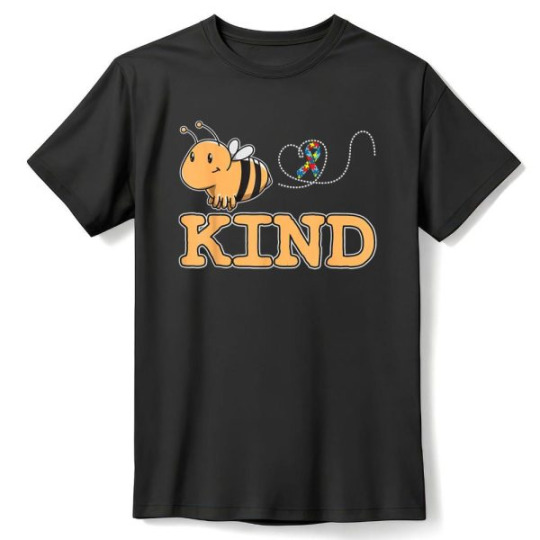
Buy now:19.95$
The vibrant colors of the ribbon represent the incredible diversity of the autistic community. But unlike the puzzle piece, the ribbon signifies unity and acceptance – a single thread woven together to create a symbol of strength and support.
Wearing or displaying our "Be Kind" ribbon is more than just a gesture; it's a conversation starter. It sparks discussions about neurodiversity, fosters empathy, and encourages a more inclusive environment for autistic individuals.

Buy now
Made with high-quality materials, this ribbon can be proudly displayed on backpacks, clothing, or lanyards. It's a subtle yet impactful way to show your support and spread the message of kindness throughout the month and beyond.
A Commitment to Kindness: Every purchase of our "Be Kind" ribbon contributes to organizations dedicated to promoting autism acceptance and social good. You're not just wearing a ribbon; you're taking a stand for a more compassionate and inclusive world.
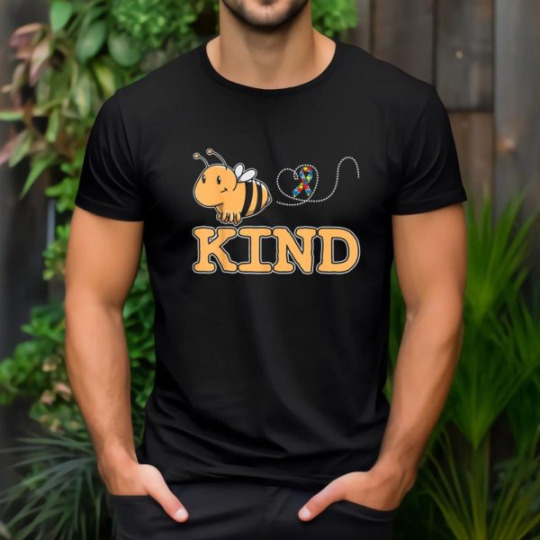
Buy now
Join the movement! Choose your "Be Kind" ribbon today and let it be a symbol of your commitment to kindness and acceptance for autistic individuals. Together, we can create a world where everyone feels valued, respected, and empowered to be their best selves.
Celebrate the vibrant spectrum of autism! Ditch the traditional puzzle piece and embrace the dazzling colors that represent Autism Awareness Month. Our collection features a kaleidoscope of hues, each symbolizing the unique strengths and experiences of autistic individuals.
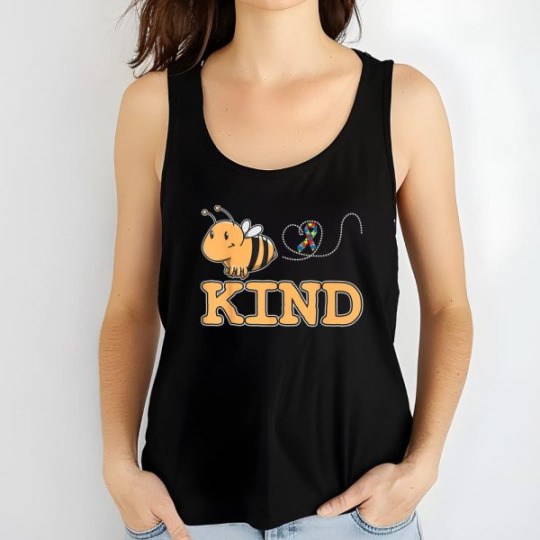
Buy now
These eye-catching designs spark conversations and promote acceptance for the autistic community. Made with high-quality materials (clothing, accessories etc.), our products are perfect for everyday wear. Show your support and ignite understanding – choose your favorite color and celebrate the incredible diversity of autism
#AutismAwarenessMonthColors#AutismAwarenessBlue#AutismAwarenessGreen#AutismAwarenessYellow#AutismAwarenessPurple#AutismAwarenessRibbon#BeKindRibbon#KindnessRibbon#AutismAwareness#AutismAcceptance#AutismUnderstanding#AutismInclusion#AutismRespect#View all AUTISM GIFTS products: https://zizzlez.com/trending-topics/hobbies/autism-spectrum-awareness-month/#All products of the store: https://zizzlez.com/
0 notes
Text
Unlocking the Mystery of Nonverbal Autism
Nonverbal Autism is a subtype of Autism Spectrum Disorder (ASD) characterized by a significant difficulty in using spoken language. However, nonverbal doesn't mean non-communicative. Individuals who are nonverbal often find alternate ways to express themselves, such as using sign language, Picture Exchange Communication System (PECS), or technology-assisted communication devices.
In fact, some nonverbal autistic individuals have become successful writers and bloggers, utilizing technology to communicate their experiences and thoughts. It's critical to remember that being nonverbal doesn't equate to intellectual disability. These individuals can understand and comprehend the world around them; they just have different ways of expressing it.
#NonverbalAutism#CommunicationDiversity#AutismUnderstanding#autistic#acutally autistic#neurodivergent#autism spectrum condition
5 notes
·
View notes
Text
For the Teachers
I have 4 aunts, 3 of which are teachers (one retired). At least one of them has asked if I have any suggestions for classroom related stimming.
First of all, if someone is not harming themselves, others, or property, then there is no need to stop them stimming.
Try to see this from the child’s perspective.
We take in too much information throughout the day and often need a bit longer to process it and respond:
Stimming can help us cope with this excess of information. If I’m having a stressful day, then adding more stress in the form of a classroom is going to be anxiety-inducing. But I deal with it, because I don’t really have a choice. One method of dealing is stimming.
The next video shows the sensory overload of a supermarket. A classroom is rife with similar overwhelming sensory inputs. The overly bright fluorescent lights, the clock ticking in the corner, the ‘naughty’ kids chatting away, the ‘class clown’ making people laugh until your head throbs, the fake fruity smell of deodorant or perfume, the noises of kids in other classrooms or the hallways, the birdsong from outside…
School is sensory hell.
Imagine being in the sensory hell of the above video. Then imagine being there for 6 hours a day, 5 days a week, with one hour for lunch (which is even worse!). Then try doing work on top of that. Frankly, you would struggle.
This is everyday life for many people. And the ways they use to cope can lead to intense bullying (most autistic people have been bullied) and severe mental health problems (autistic kids are 28x as likely to experience suicidal ideation, and anxiety and depression is common amongst autistic people).
Honestly, rather than trying to encourage the child to stim in ‘less annoying’ ways, I would suggest finding ways to reduce their sensory overload. Fight bullying, don’t tell the kids the same things they’ve heard from mean kids already (that they are acting ‘weird’ and should stop, that they are ‘stupid’ or worse words, or that they are ‘annoying’ others). Trust me, we have heard it already. And we see it every time autism is in the media. Teachers can make an enormous difference to a confused, isolated kid. Don’t encourage them to mask (it can lead to intense anxiety, even depression). Don’t tell them off for stimming.
I get that stimming can be ‘disruptive’. But all of the non-autistic kids are fidgeting in ways that are annoying me, and aren’t getting told off. Yet when I do it, I have to stop because they are ‘struggling to focus’.
Figure out why a kid is stimming in a disruptive manner.
Are they humming loudly? Maybe the room is too loud and they need to block out the background noise.
Are they tapping the table? Maybe those kids chatting in the back are saying cruel things that they want to ignore.
Are they chewing on their clothes? Maybe they are experiencing high levels of anxiety because they are perfectionists, and the chewing comforts them.
Before you try to change the child, try changing the environment.
Look at the environment from an autistic perspective. Or bring an autistic person in to evaluate your classroom.
Maybe your clock ticks. I would suggest replacing it, but due to the non-existent budget for teachers it may be better to simply remove in and ensure you have a digital time display available like the laptop. If a child asks for the time, tell them (not knowing is very anxiety inducing in my experience).
Maybe you leave your windows open. Maybe you have radiators on. An autistic person may struggle with the fluctuating temperature, so allow them to pick a spot away from either of these things, and try to avoid using these methods unless necessary.
School clothes are incredibly uncomfortable! I would want to rip mine off by the end of the day, because the jumper was loose and kept brushing against my skin lightly, which was physically painful for me. Try bringing this up with the head teacher so they can consider this the next time they change a school uniform. Maybe children with an Autism Spectrum Disorder diagnosis could be allowed more lax uniform rules (for example, just ensuring they have a white top rather than a white polo). Maybe they could wear something comfortable underneath, and just wear a school jacket or jumper over the top. Also, it’s really annoying when you have to wear a dress and have no choice. School dresses hurt because they kept brushing against me. Encourage your head teacher to have gender neutral clothing!
Let the kid go somewhere quiet, like the bathroom or an empty room. If they are older or more responsible, let them have headphones in class. If they aren’t, make sure they have access to ear defenders.
Give kids somewhere other than the canteen to go for lunch. It’s really loud! People sometimes throw food. The floor has messy, slippery bits. It’s a social nightmare if you don’t have friends.
TALK TO THE INDIVIDUAL. Maybe send the child’s parents an email asking how to make your classroom more autism friendly. Maybe talk to the child after class is over (make it clear they are not in trouble though!). Also, instead of expecting answers the first time you ask, encourage them to write down things during class if they annoy, frustrate, or overwhelm them, and give them to you at the end of class. Asking them once with no time to think back on it means you will miss a lot of stuff.
Once you’re completely sure you’ve done everything you reasonably can to help the child, then MAYBE consider working with them (with their consent!) on replacing ‘disruptive’ stims (whilst always allowing them to say ‘no’ and reject your ideas and just leave this extra work). If they are verbally stimming, try asking them why. If you can’t figure it out, you could buy a cheap karaoke set, or just get them to go into a separate room for 10 minutes in the middle of a lesson when they get restless, to sing and hum to their hearts content. If they are stimming with their body or seeking tactile input (EG tapping, clicking, etc), try finding silent, tactile stim toys for them to use instead. Maybe something to do with a special interest. Work with the child, not in opposition to them.
Also, don’t stop kids from rocking. It doesn’t affect anyone. It doesn’t make noise, it doesn’t involve destruction, it doesn’t affect anyone else in any way other than making them feel ‘uncomfortable’ with the ‘weird’ behaviour. It is very good for decreasing stress and coping with the sensory environment.
Depending upon the age and maturity of the kids, they could be taught about autism and about stimming. I’ve heard kids nowadays may be kinder towards kids with disorders, disabilities, and special needs (obviously not all kids, there is more than enough evidence that many kids are still cruel). So maybe explaining why a child is stimming would help them not get annoyed by it. Because people seem to get annoyed by things they don’t understand even if it doesn’t affect them (such as rocking). This won’t help with ‘disruptive’ stims but it may help increase understanding and acceptance, which is vital.
https://www.stimsensory.co.uk/blog/2019/4/2/for-the-teachers
#teacher#teachers#SEN#SENCO#special education#SpecialEducation#SpecialEducationalNeeds#special educational needs#autism#autistic#actually autistic#ActuallyAutistic#AutismAcceptance#autism acceptance#AutismUnderstanding#autism understanding#AutismAwareness#AutismAwarenessDay#AutismAwarenessWeek#AutismAwarenessMonth#autism awareness#autism awareness week#autism awareness month#autism awareness day#sensory#sensory overload#SensoryOverload#school#blog#blogger
9 notes
·
View notes
Photo
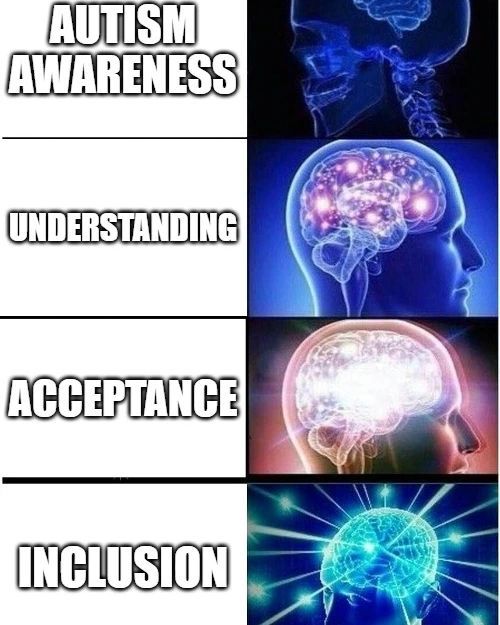
Being a hardcore introvert, I am not on social media every day. Especially as I'm managing chronic illness and severe burnout while working full time and taking care of my fur babies. My fur babies are rescues, many of whom have serious health issues. Two have terminal cancer. I advocate as I can for animals and for autistics like myself. For me, awareness of an issue is a first step. The ultimate goal is inclusion. That means understanding, accepting, and including autistics. Acceptance alone is not enough. #autisticadults #autistic #introvert #autisticmemes #autism #autismacceptance #inclusion #autisticinclusion #autismawareness #autismunderstanding #autisticintrovert https://www.instagram.com/p/CpQyxdMPhYI/?igshid=NGJjMDIxMWI=
#autisticadults#autistic#introvert#autisticmemes#autism#autismacceptance#inclusion#autisticinclusion#autismawareness#autismunderstanding#autisticintrovert
0 notes
Photo
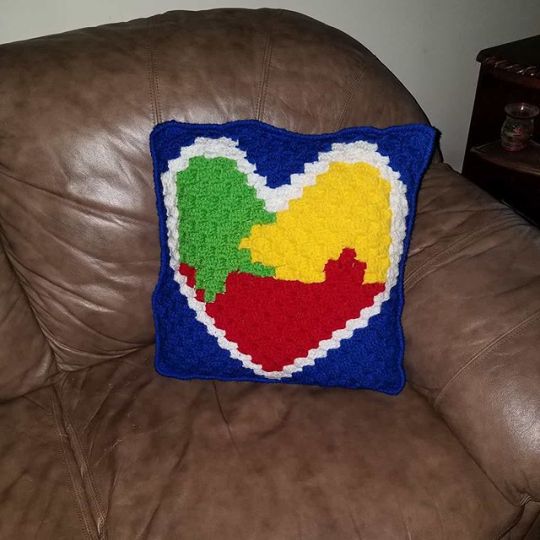
How awesome is this? Get it today at Creativewench.ecrater.com #crochet #craftsposure #ilovecrochet #crochetersofinstagram #instacrochet #crochetaddict #yarn #makersgonnamake #LoveCrafts #lovethecrochetersyoufollow #yarnologist #yarnlover #maker #moderncrochet #crochetcrew #crochetinspiration #forgedwithfiber #autismacceptance #autismspectrumdisorder #asd #autismunderstanding #autism #autismawareness #autismwarrior — view on Instagram https://ift.tt/2T0du1I
0 notes
Text
Kindness Unlocks the Autism Puzzle: Fostering a Supportive Community
Be Kind: A Piece of the Puzzle for Autism Acceptance
This unique design combines the powerful message of "Be Kind" with the symbolism of the autism puzzle piece. It's a reminder that kindness is a vital piece of fostering a more accepting and inclusive world for autistic individuals.

Buy now:19.95$
The vibrant puzzle piece represents the diverse strengths and experiences of the autistic community. The bold "Be Kind" message serves as a call to action, encouraging empathy and understanding in every interaction.
Wearing this design isn't just about fashion; it's a statement of support and a commitment to creating a kinder world. Whether you're rocking it for yourself or showing solidarity with a loved one, it sparks conversations and ignites positive change.
Made with high-quality, comfortable fabric, this product (shirt, hat, etc.) is perfect for everyday wear. Additionally, a portion of every purchase goes towards autism awareness initiatives, making a real difference for autistic people and their families.

Buy now
Choose your favorite "Be Kind Puzzle Piece" design today and become a part of the solution. By embracing kindness and celebrating neurodiversity, we can create a brighter future for everyone.
Show your pride and spark conversations with this eye-catching Autism Awareness Tee! Our vibrant designs celebrate the unique strengths of the autistic community. Made with soft, comfortable fabric, these tees are perfect for everyday wear. Every purchase supports autism awareness initiatives, making a positive impact with every look. Choose your favorite design and stand out for what makes you or someone you love truly brilliant!

Buy now
Finding the perfect gift for an autistic teen can be tricky! We've got you covered with a variety of ideas that cater to different needs and interests.
Sensory Seekers: Explore fidget toys that help manage stress and provide calming focus. Weighted blankets or noise-cancelling headphones offer ultimate relaxation.
Creative Minds: Spark their imagination with fun and engaging games that encourage problem-solving and social interaction. Look for art supplies, building sets, or coding kits that cater to their unique interests.

Buy now
Tech Enthusiasts: Consider noise-cancelling headphones for enhanced gaming, or fidget spinners with built-in lights and sounds. Wireless earbuds offer a way to enjoy music or podcasts privately.
Relaxation and Comfort: Weighted blankets or comfy clothing made from soft, breathable fabrics provide a sense of calm and security. Journaling sets or aromatherapy diffusers can help manage anxiety and promote relaxation.
Remember: Personalize it! Choose a gift that reflects their unique interests and needs
#AutismAwarenessTee#AutismAwarenessShirt#AutismAwarenessApparel#AutismAwarenessMerch#AutismAwarenessGift#GiftIdeasForAutisticTeens#GiftsForAutisticTeen#GiftsForAutisticAdolescents#AutisticTeenGifts#AutisticAdolescentGifts#AutismGiftsForTeens#BeKindPuzzlePiece#KindnessPuzzlePiece#AutismPuzzlePiece#AutismAwareness#AutismAcceptance#AutismUnderstanding#AutismInclusion#View all AUTISM GIFTS products: https://zizzlez.com/trending-topics/hobbies/autism-spectrum-awareness-month/#All products of the store: https://zizzlez.com/
0 notes